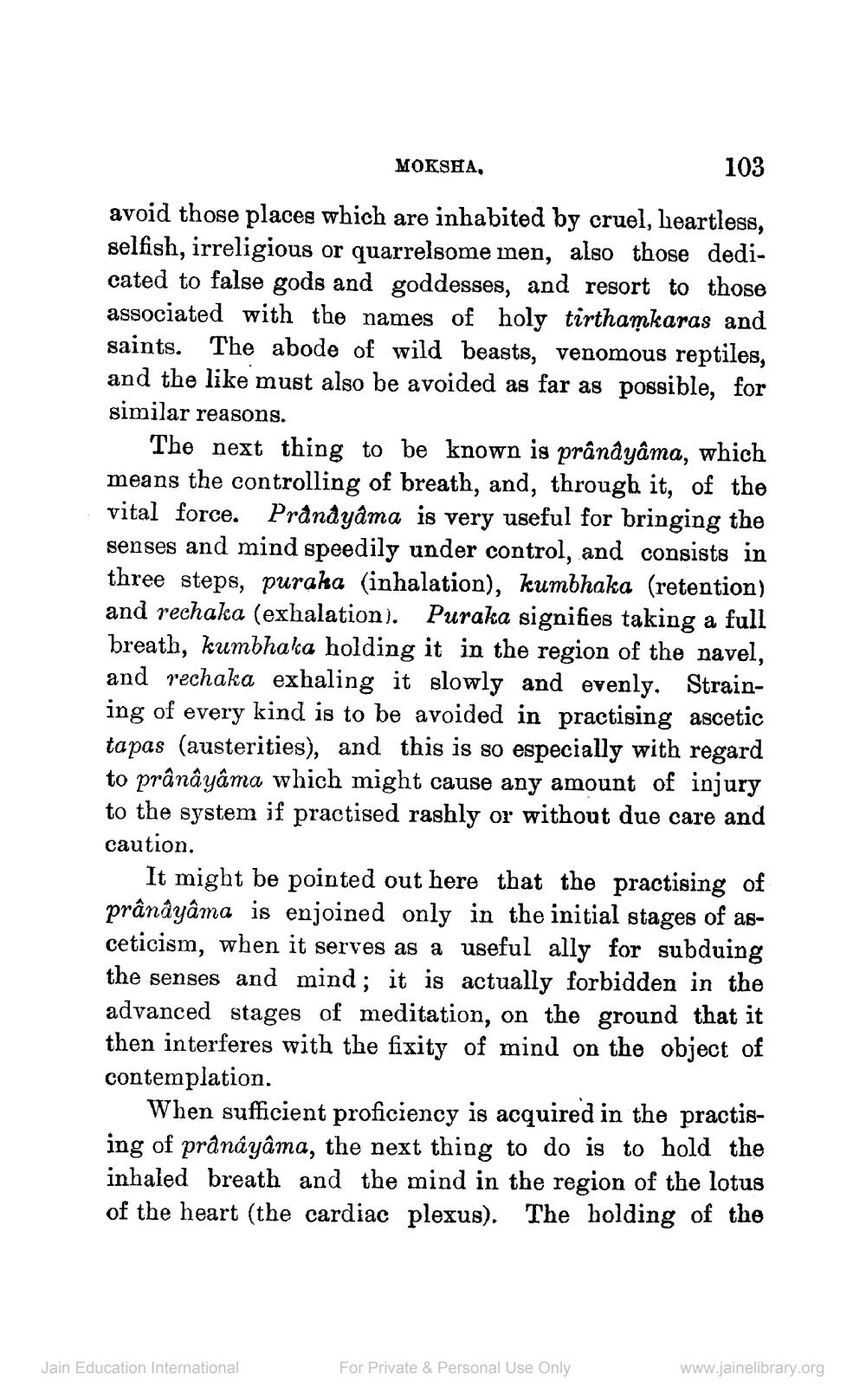________________
MOKSHA,
103
avoid those places which are inhabited by cruel, leartless, selfish, irreligious or quarrelsome men, also those dedicated to false gods and goddesses, and resort to those associated with the names of holy tirthamkaras and saints. The abode of wild beasts, venomous reptiles, and the like must also be avoided as far as possible, for similar reasons.
The next thing to be known is prânâyâma, which means the controlling of breath, and, through it, of the vital force. Pranayama is very useful for bringing the senses and mind speedily under control, and consists in three steps, puraka (inhalation), kumbhaka (retention) and rechaka (exhalation). Puraka signifies taking a full breath, kumbhala holding it in the region of the navel, and rechaka exhaling it slowly and evenly. Straining of every kind is to be avoided in practising ascetic tapas (austerities), and this is so especially with regard to prânayama which might cause any amount of injury to the system if practised rashly or without due care and caution.
It might be pointed out here that the practising of prânâyâma is enjoined only in the initial stages of asceticism, when it serves as a useful ally for subduing the senses and mind; it is actually forbidden in the advanced stages of meditation, on the ground that it then interferes with the fixity of mind on the object of contemplation.
When sufficient proficiency is acquired in the practising of prânâ yâma, the next thing to do is to hold the inhaled breath and the mind in the region of the lotus of the heart (the cardiac plexus). The bolding of the
Jain Education International
For Private & Personal Use Only
www.jainelibrary.org




